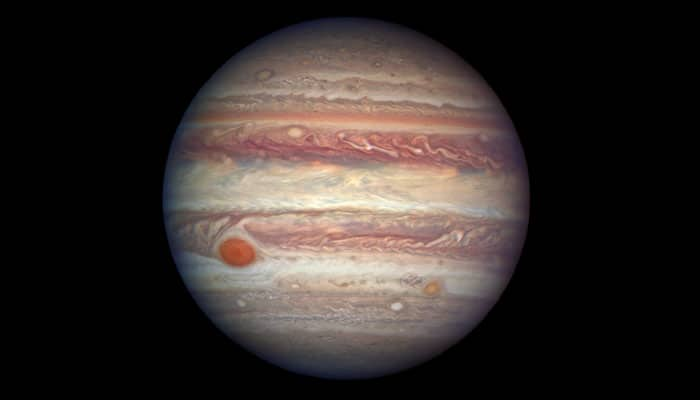New Delhi: Being the largest planet of the solar system, Jupiter has caught the fancy of scientists and astronomers compelling them to study the gas giant better by delving into its interiors.
The Juno spacecraft was therefore developed to help scientists in this endeavour. However, a new study has made an incredible discovery that apart from establishing Jupiter as the largest planet, also shows it to be the oldest one!
Yes, astronomers have finally found how old Jupiter is. The study suggests that the planet's core had already grown to be 20 times more massive than Earth just 1 million years after the sun formed.
"Jupiter is the oldest planet of the solar system, and its solid core formed well before the solar nebula gas dissipated, consistent with the core-accretion model for giant planet formation," lead author Thomas Kruijer, of the University of Munster in Germany and Lawrence Livermore National Laboratory in California, said in a statement, Space.com reported.
“By looking through a telescope, you cannot precisely date something,” says Kruijer. “This is the first time we have been able to do this using an empirical approach.”
According to Popular Science, the researchers analyzed meteorites’ molybdenum content and found that their natural variation divided them into two discrete, pre-existing groups: carbonaceous and non-carbonaceous meteorites. The former were thought to originate from beyond Jupiter, while their non-carbonaceous peers formed from material closer to the sun.
A different isotope – tungsten – was used to figure out the age of the two groups. With time, larger tungsten isotopes decay into smaller ones, so seeing more of the smaller isotope means that the meteorite has been around for a while.
"The most plausible mechanism for this efficient separation is the formation of Jupiter, opening a gap in the disk and preventing the exchange of material between the two reservoirs," the researchers wrote in the new study, which was published online on June 12 in the journal Proceedings of the National Academy of Sciences.
Space.com further reported that Jupiter's core would have to be about 20 times more massive than Earth to keep the two reservoirs from mixing, Kruijer and his team calculated. So, the results suggest the nascent gas giant was already that big within the first 1 million years of solar system history, the researchers said.
Jupiter's growth rate slowed thereafter, they said. The gas giant didn't reach 50 Earth masses until a minimum of 3 million to 4 million years after the sun's formation, the researchers determined. (Jupiter is currently about 318 times more massive than Earth.)
"Our measurements show that the growth of Jupiter can be dated using the distinct genetic heritage and formation times of meteorites," Kruijer said in the same statement.
Knowing that Jupiter has been around since (almost) the very beginning of the solar system helps explain the way the rest of the solar system has developed.
"Jupiter forming can change the distribution of rocky material throughout the entire Solar System... or, as discussed in this work, by serving as a roadblock for the migration of small material," Walsh says.
This could even be the reason that there is only one, relatively small Earth. Kruijer acknowledges that this theory is somewhat speculative, but once Jupiter formed, it could have blocked more matter from getting within a habitable range of the sun, Popular Science concluded.
















